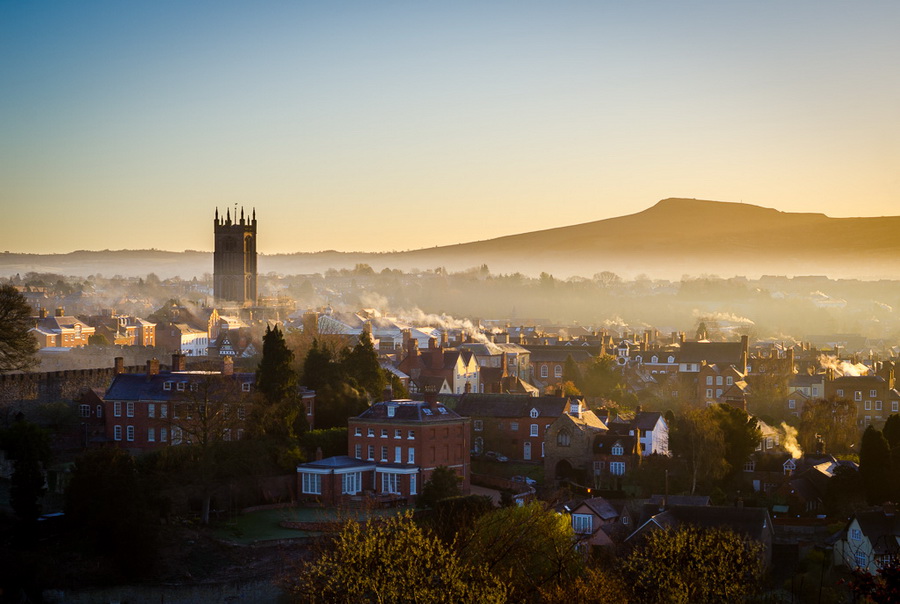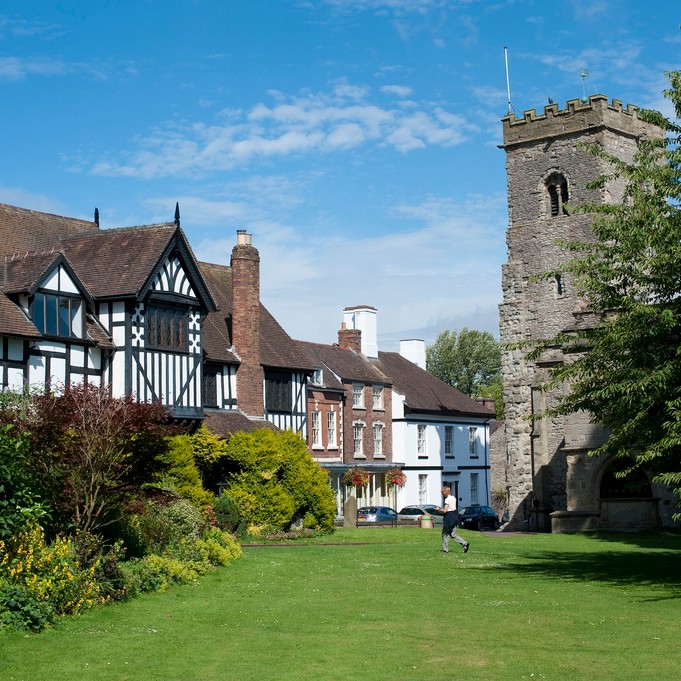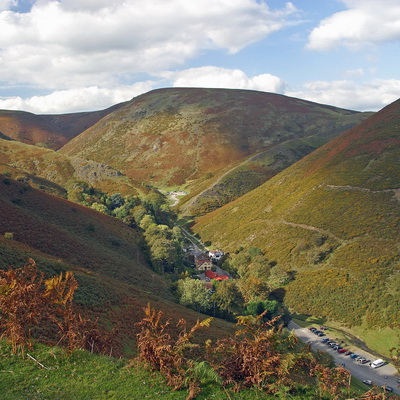Among the folds of our landscape, we have an extraordinary wealth of places to visit.
It is a landscape studded with ancient roads, barrow mounds and hillforts. We have some of the finest medieval castles and manors anywhere in England and our industrial story mirrors the industry of Ironbridge.
The links below give you a feel for different areas in the Shropshire Hills, and a good starting point for information is the Shropshire Hills Discovery Centre in Craven Arms.
The Long Mynd & Stiperstones, including Church Stretton
The Clun Forest & Valley, including Clun and Bishop's Castle
The Clee Hills & Corvedale, including Ludlow and Cleobury Mortimer
The Wrekin & Wenlock Edge, including Much Wenlock

Visually, these two ‘hills’ are very different - the Long Mynd is a large and long plateau, while the rugged outline of the Stiperstones ridge is unmistakable. Together, they make up the largest area of heathland in the Shropshire Hills. Come late summer these hilltops are a sea of purple and not to be missed. Along with the heather a variety of other plants flourish here including bilberry (known locally as whinberry), and this in turn attracts many insects and birds – look out for a green hairstreak butterfly or stonechat on the gorse.
This area is steeped in ancient history and folklore. At the Shooting Box is one of sixteen Bronze Age burial mounds found on the Long Mynd and the Portway, a 5,000 year old ridgeway route that extends along the spine of the Mynd, once carried Neolithic traders high and dry above the wet and wooded valleys. During 1870s the Stiperstones area was one of Britain’s main sources of lead. Remains of this once thriving industry are scattered along the western slopes of the Stiperstones. Both Mary Webb and Malcolm Saville set their stories in these hills, and there is many a myth and tall tale to be told.
Places to visit include Church Stretton, Carding Mill Valley & Long Mynd, The Bog Visitor Centre & Bog Mine, and Snailbeach Lead Mine.
The Shropshire Hills Shuttle Buses runs at weekends through the summer months to help you explore the Long Mynd & Stiperstones area.
Bounded to the west by the Welsh border, this area has been long fought over, and the Welsh place names and many defensive features, such as Offa’s Dyke, Clun and Hopton Castle, are testimony to these turbulent times. These days, the rolling upland hills and meandering river valleys give the area a quiet and remote feel.
The tiny town of Clun lies at the centre of the lovely river valley which bears its name. Bishop’s Castle*, famed for its colourful high street, is also close by. Both have visitor information, local walks and cycle rides, and host festivals through the year.
The Clun, Onny, Teme, Redlake, Kemp and Unk are all Rivers which flow through this area. Alders, locally known as ‘wollers’, line the riverbanks and were traditionally coppiced for clog making. Clogging in the Clun was a common craft until the early 20th century. The word ‘forest’ serves as a reminder of the area’s status as a Royal hunting forest during the medieval period where Forest Law was enforced to protect the King’s deer. It doesn’t necessarily mean it was all covered in trees!
Places to visit include the Shropshire Hills Discovery Centre, Bury Ditches, Clun, Stokesay and Hopton Castle, the Offa's Dyke Visitor Centre, and Clunton Coppice.
*From May to the end of September, on Tuesdays and Saturday evenings you can join a Bishop's Castle Town Tour, led by local guides. Discover the history, buildings and layout of the 'plantation market town' and hear about some of the characters and events that shaped it. Meet 6.30pm at the Lytchgate of St Johns church at the lower end of town. Cost £3, children free.
Charming and captivating. But look a little closer and you’ll unearth the hidden heritage of the Clee Hills and the Corvedale. Coal mining on the Clee Hills started in medieval times and quarrying continued into the early part of the last century. Noise and dust must have been commonplace with inclines and railway wagons taking the quarried rocks away.
Today the scene is somewhat different. Black dhustone is still quarried on Clee Hill, but Brown Clee and the top of Titterstone Clee are silent. Nature has reclaimed the hills and remnants of rare wildflower meadows survive while the disused quarries have become home to a wealth of wildlife, including the peregrine falcon.
Close by is the beautiful medieval town, Ludlow, famed for its timber framed buildings, fine food and festivals. The market town of Cleobury Mortimer sits on the eastern edge of the Shropshire Hills.
The Corvedale is the broadest of valleys in the Shropshire Hills and the River Corve is a delight. The dale was more densely populated in the medieval period than today and a number of deserted village sites remain as a reminder of the times when peasants toiled in the open fields.
Places to visit include Ludlow Castle, Wilderhope Manor, Flounders Folly, Titterstone Clee
Geologically speaking the Wrekin and Wenlock Edge are worlds apart. The Wrekin is made up of volcanic rock and forms part of the distinctive Stretton hills ridge, near Church Stretton. Wenlock Edge, on the other hand, was formed in a tropical sea some 425 million years ago during the Silurian period – you can still find pieces of coral as you walk along it.
Both are covered with broad-leaved woodland, including beech, oak and ash. The limestone soils of Wenlock Edge support a huge diversity of plants and flowers including several rare orchids. The limestone gave rise to a major local industry that today has finished, leaving a legacy of worked-out quarries, limekilns and trackways. On a clear day, stand on the summit of the Wrekin, the Shropshire Hills and beyond are spread out before you. It is a magnificent view, and one that has been no doubt admired for millennia and more.
Close by are the towns of Much Wenlock and Wellington, with visitor information, local walks and country markets.
Places to visit include The Wrekin, Wenlock Edge, Wenlock Priory, Buildwas Abbey, the Ercall

.jpg)

